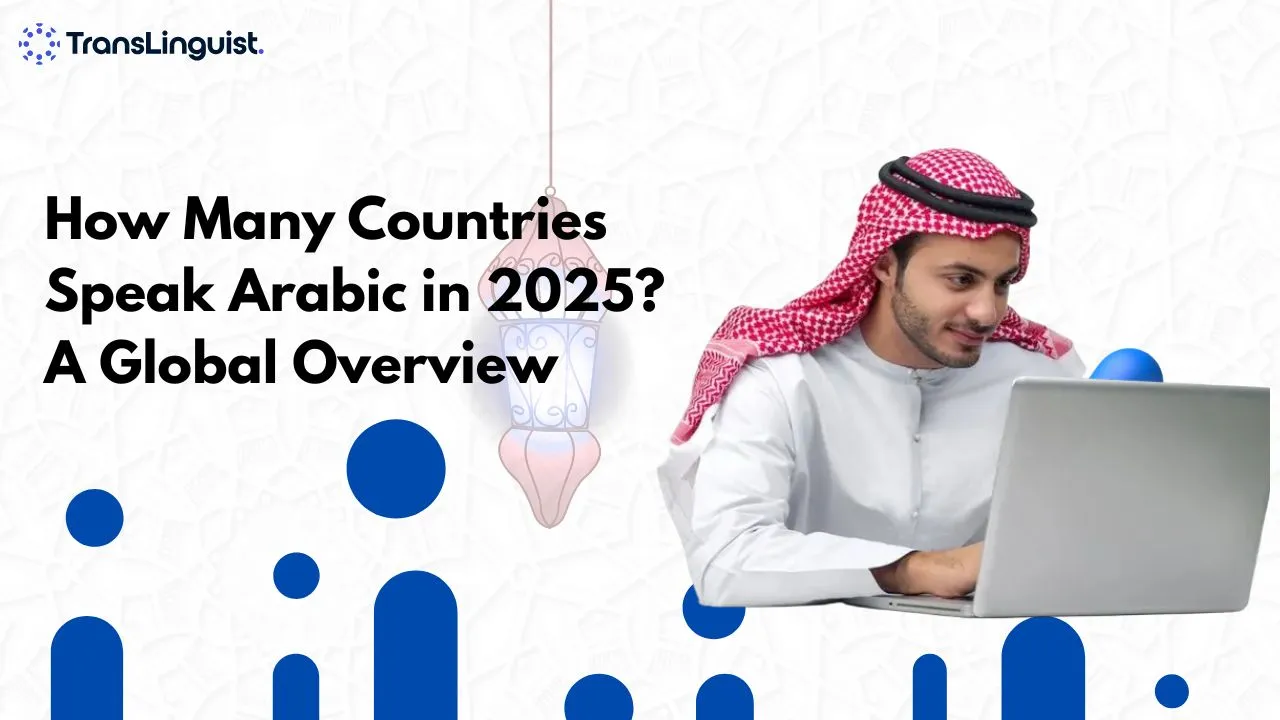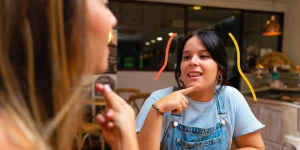Arabic is spoken by 491 million worldwide. Arabic continues to be an important language, even one of the world’s most important tongues for international trade, cultural exchange, and diplomacy. 22 nations have Arabic as an official tongue in 2025 and additionally as a co-official language; the language is fairly common in the Middle East, North Africa, and elsewhere. The evolving Arabic language will be mentioned here in this updated manual, along with geographical differences and guidance on doing business with Arabic speakers.
Arabic in 2025: Key Statistics & Trends
Official Arabic-Speaking Nations
There are 22 states that have Arabic as an official language, and they are all mostly Arab League members. They are:
- In the Middle East: Saudi Arabia, UAE, Qatar, Kuwait, Oman, Bahrain, Iraq, Jordan, Lebanon, Syria, Yemen, Palestine.
- In North Africa: Egypt, Algeria, Morocco, Tunisia, Libya, Sudan, Mauritania.
- In the Horn of Africa: Somalia, Djibouti, Comoros.
New in 2025:
- Stake in Regional Geopolitics: Chad and Eritrea are the freshest additions to the linguistic list as Arabic stands declared an official co-language. This just increases the linguistic diversity.
- Economic Apex: The total GDP of all Arab-speaking nations is on the lap of $3.5 trillion, with energy, tech, and e-commerce being the key players.
Find out about our Arabic Translation Service for culturally nuanced solutions.
Arabic Dialects: Regional Variations
Arab dialects vary considerably from each other, hence there is a high impact on communicative issues and problems in translation:
Modern Standard Arabic (MSA) is used for very formal occasions (media, Messrs. academicians).
Some Important Dialects:
-
- Egyptian Arabic is spoken media and common folk of the land.
- Gulf Arabic is spoken in business centers such as the UAE and Saudi Arabia.
- Levantine Arabic is spoken in Lebanon, Jordan, and Syria.
- Maghrebi Arabic is spoken in Morocco, Algeria, and Tunisia.
Localization Note
Localization Note: Dialects may be used in the marketing context; whilst “sayarra” is the most commonly used word for car in the Gulf dialect, the Egyptian dialect, on the other hand, says “arabaya.”
To maximize accuracy, use our AI-Powered Translation with dialect-specific options.
Arabic is important as a language going beyond linguistic purposes, as it is the liturgical language of Islam, which is spoken in prayers and Islamic texts by Muslims all over the world. The religious significance has contributed to the spread and preservation of Arabic in many different countries.
Arabic in Global Influence
- Religion: The language of the Quran; therefore, the Arabs grant it sacredness in the minds of about 1.9 billion Muslims around the world.
- Cultural Legacy: It has been the medium of transmission of numerous sciences into Spanish, Persian, and Swahili through centuries of trade and scholarship.
- Digital Growth: Arabic is the globe’s 4th most widely used language online, and MENA’s online shopping market is likely to be worth $50 billion in 2026.
Access this market with Multilingual SEO Solutions.
Conclusion:
Finesse and cultural knowledge are required to navigate the linguistic complexity of Arabic. We bring AI-based tools and in-country specialists together at TransLinguist to create translations that resonate.
Explore Our Services:
- Arabic Interpretation Services for real-time communication.
- E-Learning Localization for Arabic-speaking students.
- Voice-Over Services in regional dialects.
Ready to Engage?
Contact TransLinguist for a customized strategy.
FAQs
How many countries speak Arabic in 2025?
Arabic is the official language in 22 countries, with significant populations in Chad, Eritrea, and Israel. Over 12 African nations use Arabic officially or regionally.
Which dialect is best for business?
Gulf Arabic dominates commerce in UAE and Saudi Arabia, while MSA suits formal documents.
Why is Arabic translation challenging?
Dialect variations, right-to-left (RTL) formatting, and cultural nuances require expert localization.
How many countries in the world are Arabic?
The Arab World consists of 22 countries in the Middle East and North Africa: Algeria, Bahrain, the Comoros Islands, Djibouti, Egypt, Iraq, Jordan, Kuwait, Lebanon, Libya, Morocco, Mauritania, Oman, Palestine, Qatar, Saudi Arabia, Somalia, Sudan, Syria, Tunisia, the United Arab Emirates, and Yemen.



